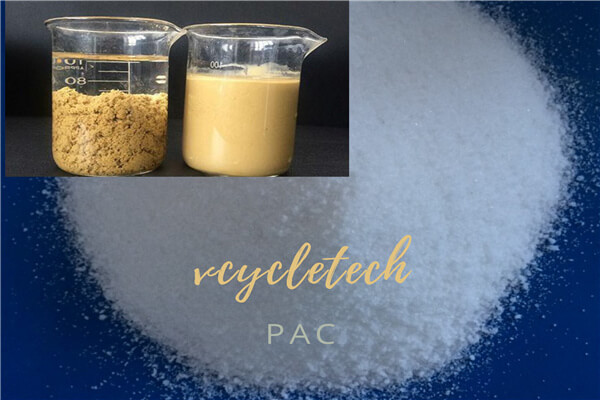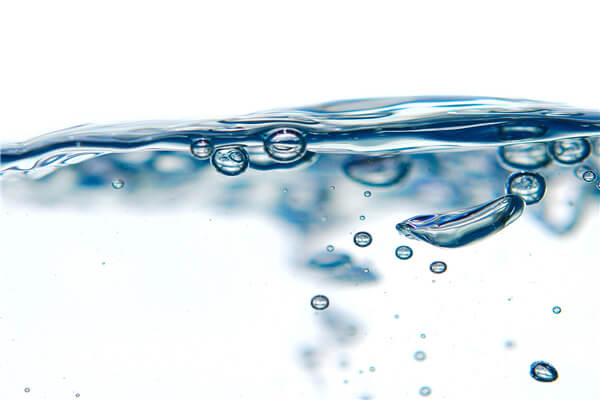The effect of flocculants varies depending on the state of the raw water being treated. The type, size, concentration, and pH of the suspended matter in the natural moisture will vary depending on the water quality. It is also important to note that these conditions usually change frequently as well. The mixing conditions also affect the state of floc formation. Therefore, to obtain the best results, we need to adjust the pH value and the mixing conditions. The high molecular weight flocculating polymer to be used will vary depending on flocculation and sedimentation, pressurized air flotation, sludge dewatering, and other treatment purposes.
vcycletech technical personnel always summarize advanced technology, combined with years of practical experience, research and development of water treatment materials series, widely used in urban water supply, environmental protection, electric power, coal washing, petrochemical, incense, textile, printing and dyeing, paper and other fields, and by the majority of customers highly praised.
Typical flocculant formula composition.
40-55% aluminum sulfate amine; 7-10% sodium aluminum sulfate
9-10 million of acrylamide polymer 8-15%.
20-25% of sodium carbonate; 10-30% of polyphosphoric ferric chloride
10-30% of poly aluminum chloride; 5-10% parts of acryl cystamine
Sodium carbonate 20-40% parts; disodium EDTA 3000ppm.

8-13% polysilicate iron (PSF); 10-15% methacrylic acid
2-8% chlorate; 1-6% silane coupling agent.
8-12.5% poly(dimethyldiallylammonium chloride); 4-9% cellulose
20-30% polymerized ferric chloride (PFC); 2-7% coagulant aid.
7-11% chitosan; 1-6% medium relative molecular weight polyacrylamide and 10.5-15% soybean curd.
The total sum of each component of the above flocculant formula for wastewater treatment is 100%.
First, take 8-13% polysilicate iron (PSF), 10-15% methacrylic acid, 2-8% chlorate, and 20-30% polymerized ferric chloride (PFC) into the reaction kettle for fast mixing, mixing with 800-1000r/min stirring equipment for 2-4 minutes, then use ultrasonic vibration for 5-7 minutes, ultrasonic vibration ultrasonic frequency of 25kHz ~ 35kHz. The reaction is sealed within the reaction kettle for 2 ~ 2.5 hours, and the oxygen content of the air in the sealer is the oxygen content of the conventional atmosphere.
Add 8-12.5% of poly(dimethyl diallyl ammonium chloride) and half of the reaction amount of 1-6% of the relative molecular weight polyacrylamide to the mixture in process one, stirring, stirring speed of 200-300r/min, continuously pass nitrogen gas to the sealed reaction kettle for 15-30 minutes, pass nitrogen gas while prompting to make it fully swollen to remove the oxygen in the mixture and assemble the components mixed After stirring and passing nitrogen gas for 15-30 minutes, the mixture is left to stand for 5-10 minutes.
The mixture in process two and cool down the temperature to 5 ~ 8 ℃, and then the other half of the reaction amount of 1 ~ 6% of the relative molecular weight of polyacrylamide 1 ~ 5mL / min drop into the mixture in step two, slowly mixed, using ultraviolet lamp irradiation, UV lamp power of 1000W, irradiation distance of 40 ~ 50cm, the irradiation time of 90 ~ 120 minutes.
Make the mixture in process three to warm up to 25~29℃, then slowly drop 4~9% cellulose, 10.5~15% soy sauce Aspergillus and 7~11% chitosan into the mixture in the order of cellulose → soy sauce Aspergillus → chitosan, when mixing, slowly mix, use the sterile stirring rod for stirring, stirring rate is kept 15~20r/min, going 5~7 minutes, mixing After mixing, put it in 25~29℃ and let it stand in room air for 3~4 hours;
Then 1-6% silane coupling agent and 2-7% coagulant added to the mixture in process four, rapid stirring and mixing, the use of ultrasonic vibration 4-7s, ultrasonic vibration ultrasonic frequency of 25kHz ~ 35kHz, after mixing, the mixture will be debugged to room temperature, using 0.1mol / L sodium hydroxide for debugging PH value, PH value of 7.0 ~ 8.5.
These are two types of flocculant formulas for wastewater treatment. For more flocculant formulas for water treatment, you can find vcycletech for a free consultation and get water treatment flocculant formulas.
There are many types of flocculants, divided into inorganic flocculants and organic flocculants. Still, the treatment of sewage and wastewater generally uses polymeric aluminum chloride, polymeric ferric sulfate, polymeric ferric aluminum chloride, and PAM, and so on.

Polymeric aluminum chloride: strong adaptability to a variety of water quality, for high turbidity water flocculation precipitation effect, is particularly significant, applying PH value in the range of 5-9. For low-temperature water treatment effect is better, flocculation of alum formation block, dense and heavy particles, easy to settle, can shorten the sedimentation time, low turbidity of the water, slight color, good filtration. It can shorten the filtration cycle. High alumina content, the low dosage can reduce the cost of water treatment. Small corrosiveness, conducive to pipeline protection, easy to use, easy to store and transport, and its effect remains unchanged in case of dampness.
In the flocculant, the material that can make the sediment in water gather and sink is called coagulant. Commonly used coagulants are mainly inorganic cationic polymers, such as hydroxy aluminum, hydroxy zirconium, etc. These inorganic cationic polymers can be dissociated in water to give multinuclear hydroxyl bridge complexions and neutralize the surface of the stable suspension's harmful electrical properties. Chemical agents such as ferric chloride, aluminum trichloride, and zirconium oxychloride can also form multinuclear hydroxyl-bridged complexions through hydrolysis, complexation, and hydroxyl-bridging to play the same role as hydroxy aluminum and hydroxy zirconium.
Polymeric aluminum chloride (PAC), polymeric aluminum chloride iron (PAFC), alum, ferric chloride (Fe2Cl3), generally using PAC or PAFC, will be an appropriate selection of polyacrylamide (PAM) as an auxiliary agent to enhance the flocculation effect. Alum and ferric chloride are generally used for light pollutant purification. PAC and PAM are more often used for sludge dewatering, which specific application and the particular water quality and PH, so the available selection needs to consider carefully.
How to choose flocculant formulations in wastewater treatment depends on the specific industry wastewater characteristics to choose. It also depends on which link to add flocculant formulations, to do what purpose. When choosing inorganic flocculant formulations, we should consider the composition and PH of the wastewater and then select the most suitable one (iron salt, aluminum salt or iron-aluminum salt, silicon-aluminum salt, silicon-iron salt, etc.).
When choosing organic flocculant formulations (e.g., polyacrylamide PAM), it mainly depends on the anionic polyacrylamide, cationic polyacrylamide non-ionic polyacrylamide to be used. Anionic polyacrylamide is generally divided into weak anion, medium anion, and strong anion, depending on the degree of hydrolysis. The choice of the cation is usually used in sludge dewatering, the selection of cationic polyacrylamide is critical, urban wastewater treatment plants are generally used in the strong cationic polyacrylamide, paper, printing and dyeing plant sludge dewatering typically choose weak cation, pharmaceutical wastewater is generally selected strong cation, etc. Each kind of wastewater has its unique characteristics, non-ionic polyacrylamide is mainly used in mildly acidic conditions, printing and dyeing plants use non-ionic PAM more. All of these flocculant formulations are selected according to the test to determine, in the test first determine the approximate dosing, observe the flocculation and sedimentation speed, accounting for the cost of treatment, select the economic and applicable flocculation agent formulations.